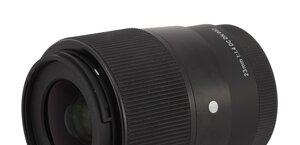Viltrox AF 27 mm f/1.2
8. Vignetting
| X-T2, JPEG, f/1.2 | X-T2, RAW, f/1.2 |

|

|
| X-T2, JPEG, f/1.4 | X-T2, RAW, f/1.4 |

|

|
| X-T2, JPEG, f/2.0 | X-T2, RAW, f/2.0 |

|

|
| X-T2, JPEG, f/2.8 | X-T2, RAW, f/2.8 |

|

|
In case of JPEG files the situation looks decent. At the maximum relative aperture vignetting reaches 34% (-1.22 EV), a sensible result for such a good aperture fastness offered by the tested lens. By f/1.4 this aberration decreases very slightly to 33% (-1.15 EV) and by f/2.0 it drops further to a value of 29% (-0.98 EV). All problems end almost completely by f/2.8 nd f/4.0 where we measured the following results: 16% (-0.51 EV) and 12% (-0.36 EV)
Please Support UsIf you enjoy our reviews and articles, and you want us to continue our work please, support our website by donating through PayPal. The funds are going to be used for paying our editorial team, renting servers, and equipping our testing studio; only that way we will be able to continue providing you interesting content for free. |
- - - - - - - - - - - - - - - - - - - - - - - - - - - - - - - - - - - - - - - - - - - - - - - -
Of course uncorrected and uncut RAW files can tell us more about the real level of this aberration. Here the results are higher because at the maximum relative aperture you have to take into account a loss of light that reaches in the corners 51% (−2.08 EV). It is a high value but still you have to remember what parameters you are dealing with. By f/1.4 vignetting drops to 48% (−1.91 EV), and by f/2.0 to 31% (−1.06 EV). By f/2.8 you have to accept a loss of light reaching 18% (−0.56 EV); all problems end by f/4.0, where we got a result of 12% (-0.38 EV). Further stopping down doesn't provide any measurable effect.
| Fujifilm X-T2, RAW, f/1.2 |
 |






